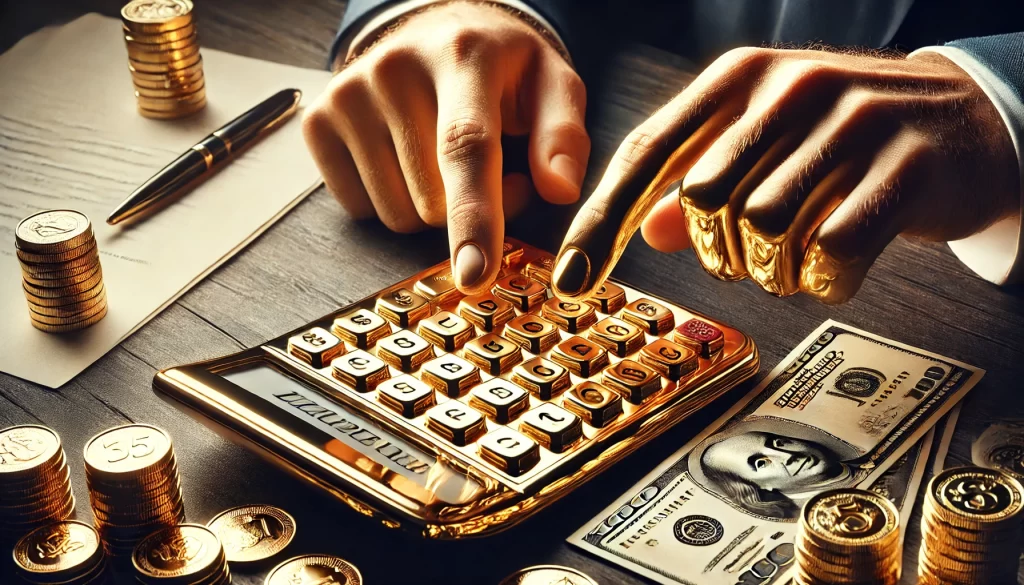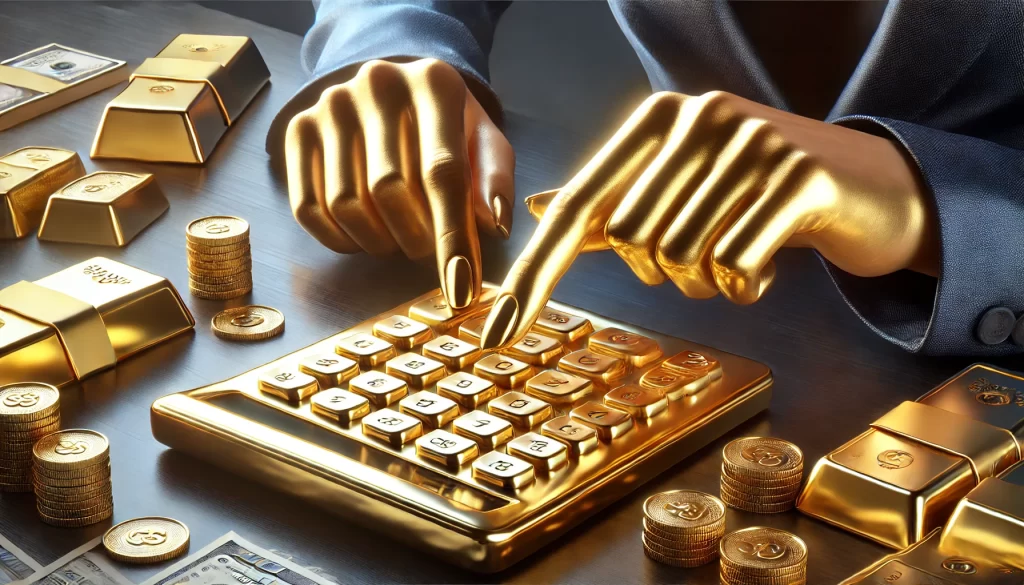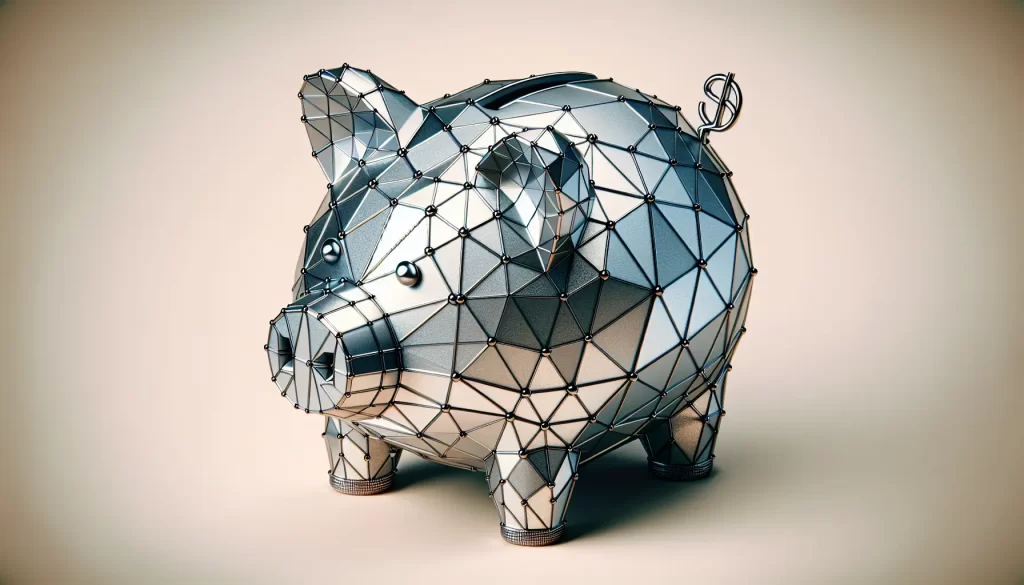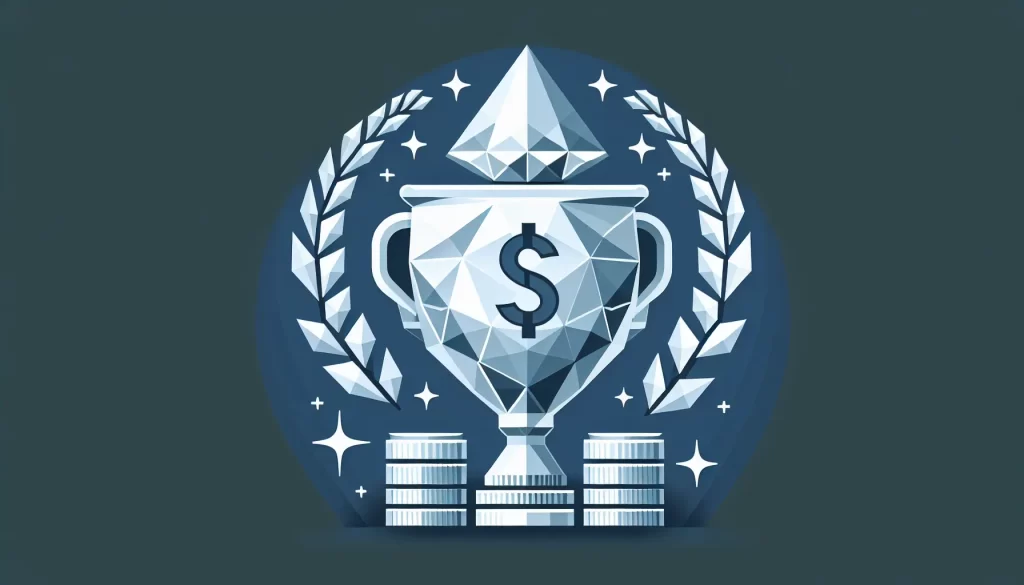As a precious metals IRA writer, I have heard the question of, “How much should you invest in precious metals” many different times.
So, in this article I wanted to bring in resources to help you make the best decision in your journey.
I added a few charts in here too, to ideally make it a quick read.
Quick Disclaimer:
The content provided in this article is for informational purposes only and should not be considered financial or investment advice. Always consult with a qualified financial advisor before making any decisions regarding Precious Metals, Investing, or IRAs. Additionally, this article contains affiliate links, and I may earn a commission if you make a purchase through these links, at no additional cost to you.
Another question, I have been asked is, “What Gold IRA companies are the best” or “Which IRA companies are the most trusted?”.
If you’d like more information, below is a link to a comparison PDF by Augusta Precious Metals that could be useful. (It’s also free.)
Augusta Gold IRA Company Integrity Checklist
Importance of Precious Metals
Precious metals like gold, silver, platinum, and palladium have always been valued for their intrinsic worth and unique characteristics.
They offer a reliable hedge against inflation and are known for their ability to preserve wealth over time.
Unlike paper currency, precious metals cannot be devalued by inflation or manipulated by government policies, making them an attractive option for long-term investment.
Key Benefits of Precious Metals:
- Hedge Against Inflation: Precious metals maintain their value during economic downturns and periods of high inflation. Gold, in particular, is often sought after during times of economic instability.
- Intrinsic Value: Unlike stocks or bonds, precious metals have intrinsic value, meaning they hold worth due to their physical properties and rarity.
- No Credit Risk: Investing in physical metals means there is no risk of default, unlike stocks or bonds which depend on the financial health of the issuing entity.
- Liquidity: Precious metals can be easily bought and sold in markets around the world, providing a high level of liquidity.
- Diversification: Including precious metals in your investment portfolio can reduce risk by diversifying asset classes.
- Protection Against Upheaval: Precious metals provide insurance against financial, political, or military upheavals.
Benefits Over Stocks
Investing in precious metals offers several advantages over traditional stocks.
While both asset classes have their merits, precious metals provide a unique set of benefits that can enhance your investment strategy.
Comparative Benefits:
- Inflationary Protection: As noted earlier, precious metals act as a hedge against inflation. When inflation rises, the value of paper currency typically falls, but precious metals retain or even increase in value.
- Market Inversely Correlated: Gold and silver often move inversely to stocks and bonds, protecting your portfolio from market downturns. When equities and bonds decline, precious metals usually retain their value or appreciate (Global Coin).
- No Credit Risk: Stocks depend on the issuer’s performance, whereas precious metals do not carry credit risk. You own a tangible asset that holds value independently.
- Diversification: Adding precious metals to your portfolio can diversify your investments, reducing the overall risk.
- Ease of Purchase: Precious metals can be easily purchased in various forms, such as coins, bars, or through Exchange-Traded Funds (ETFs).
| Comparison | Precious Metals | Stocks |
|---|---|---|
| Inflation Protection | High | Low |
| Credit Risk | None | Dependent on Issuer |
| Liquidity | High | High |
| Intrinsic Value | Yes | No |
| Diversification | Yes | Yes |
| Market Correlation | Inversely | Directly |
Precious metals like gold and silver offer a unique set of advantages that can complement traditional investments like stocks.
To learn more about specific precious metal investments, check out our articles on how much of your investment should be in precious metals and what are the benefits of a precious metals ira.

Types of Precious Metals
Gold and Silver
Gold and silver are the most popular choices for investors due to their historical stability and value retention.
Gold is known as a safe haven asset, often maintaining or increasing its value during economic downturns.
Silver, while also a store of value, has significant industrial applications, which can influence its market price based on economic conditions.
Gold
- Stability: Gold is renowned for its ability to preserve wealth and act as a hedge against inflation.
- Demand: Gold’s global demand spans across jewelry, technology, and as a financial asset.
- Historical Performance: Consistently retains value over long periods.
- IRA Inclusion: Widely accepted in precious metal IRAs.
Silver
- Affordability: Generally more affordable than gold, making it accessible for smaller investments.
- Industrial Use: Used in electronics, solar panels, and other industrial applications.
- Volatility: More volatile than gold due to its industrial demand.
- IRA Inclusion: Commonly included in precious metal IRAs.
| Metal | Stability | Industrial Use | Volatility | IRA Inclusion |
|---|---|---|---|---|
| Gold | High | Low | Low | Yes |
| Silver | Medium | High | High | Yes |
For more details, you can check out our comprehensive guide on how much gold do you need to retire.
Platinum and Palladium
Platinum and palladium are less common but offer unique diversification opportunities.
These metals are primarily used in the automotive industry, making their prices sensitive to changes in automobile production levels.
They can be more volatile but have the potential for higher returns.
Platinum
- Rarity: Rarer than gold and silver, often leading to higher prices.
- Industrial Use: Majorly used in catalytic converters for vehicles.
- Volatility: Higher volatility due to reliance on the automotive industry.
- IRA Inclusion: Included in precious metal IRAs but less common.
Palladium
- Value: Currently the highest valued metal among the four.
- Industrial Use: Crucial for catalytic converters and industrial processes.
- Volatility: Highly volatile, with prices influenced by supply and demand in the auto industry.
- IRA Inclusion: Can be included in IRAs, though less typical.
| Metal | Rarity | Industrial Use | Volatility | IRA Inclusion |
|---|---|---|---|---|
| Platinum | High | High | High | Yes |
| Palladium | Very High | High | Very High | Yes |
Considering these factors can help you determine the best metals for your investment portfolio.
For a deeper dive into the specifics of each metal, visit our articles on what precious metals are IRA approved and how safe is a precious metals IRA.
Diversifying your investment across these metals can provide a balanced portfolio that mitigates risk while maximizing potential returns.
Factors Influencing Precious Metal Prices
When deciding how much you should invest in precious metals, it’s essential to understand the key factors influencing their prices.
These factors can help you make informed decisions about your precious metal investments.
Economic Indicators
Economic indicators play a significant role in determining the price of precious metals.
Key indicators include GDP growth rates, employment figures, and consumer spending patterns.
During economic downturns, precious metals are often viewed as safe-haven assets, leading to increased demand and higher prices (The Royal Mint).
| Economic Indicator | Effect on Precious Metals |
|---|---|
| GDP Growth Rates | Lower growth rates can increase demand for safe-haven assets like gold. |
| Employment Figures | Higher unemployment can lead to higher precious metal prices. |
| Consumer Spending | Lower spending increases demand for safe-haven assets. |
For more details, you might want to consider how safe is a precious metals IRA.
Political and Geopolitical Factors
Political and geopolitical factors can significantly impact the prices of precious metals.
Factors such as political uncertainties, international conflicts, and trade policies often lead to price fluctuations.
Market analysts monitor elections, policy shifts, and regulatory changes for their potential effects on the precious metal market.
Climate policy uncertainty also affects the price volatility of precious metals.
This impact was particularly notable during the COVID-19 pandemic.
For instance, platinum and palladium showed high fluctuation series during this period (ScienceDirect).
| Factor | Effect on Precious Metals |
|---|---|
| Political Uncertainties | Increased demand as a hedge against uncertainty. |
| International Conflicts | Higher prices due to investor flight to safety. |
| Trade Policies | Price fluctuations based on trade agreements and tariffs. |
| Climate Policy Uncertainty | Higher volatility and increased demand as a hedge. |
To better understand how these factors affect your investments, check out what are the negatives of a precious metals IRA.
By keeping an eye on these economic and geopolitical factors, you can make more informed decisions about your investments in precious metals.
For more guidance on choosing the right type of metals, visit what is the safest precious metal to invest in.

Ways to Invest in Precious Metals
When considering how much you should invest in precious metals, it’s essential to understand the various ways you can make these investments.
Two popular methods are buying physical metals and purchasing Exchange-Traded Funds (ETFs). Each has its own set of advantages and considerations.
Buying Physical Metals
Buying physical metals involves purchasing tangible assets like coins or bars.
This method allows you to hold and store the actual precious metal, providing a sense of security and ownership.
According to Investopedia, this is one of the most straightforward ways to invest in precious metals.
Advantages
- Tangible Asset: You have physical possession of the metal, which can be reassuring during economic uncertainty.
- No Counterparty Risk: Unlike stocks or bonds, physical metals are not dependent on any entity’s financial health.
Disadvantages
- Storage and Security: You need secure storage, which can be costly.
- Liquidity: Selling physical metals can be less convenient and may involve additional costs.
For those new to investing, recognized coins such as American Gold Eagles or Canadian Maple Leafs are often recommended (Global Coin).
Exchange-Traded Funds (ETFs)
ETFs are investment funds traded on stock exchanges, similar to stocks.
They specifically focus on precious metals or companies involved in the precious metals industry.
CFTC suggests that ETFs offer a convenient and accessible way to engage in the precious metal market.
Advantages
- Liquidity: ETFs are easily traded on stock exchanges, making them highly liquid.
- Diversification: ETFs often invest in multiple companies or a basket of metals, spreading risk.
- No Storage Concerns: You don’t need to worry about physical storage or security.
Disadvantages
- Management Fees: ETFs charge management fees, which can eat into returns.
- Counterparty Risk: You are reliant on the financial health of the ETF provider.
Popular Precious Metal ETFs
| ETF Name | Metal Focus | Ticker Symbol |
|---|---|---|
| SPDR Gold Shares | Gold | GLD |
| iShares Silver Trust | Silver | SLV |
| ETFS Physical Platinum Shares | Platinum | PPLT |
| ETFS Physical Palladium Shares | Palladium | PALL |
For more detailed information on precious metal IRAs, including whether is a precious metal ira a good idea? or understanding what are the negatives of a precious metals ira?, be sure to check our related articles.
Both methods of investing in precious metals have their pros and cons, and your choice will depend on your investment goals, risk tolerance, and logistical considerations.
Whether you prefer the security of holding physical metals or the convenience of trading ETFs, knowing your options is the first step in making an informed decision.
Choosing the Right Precious Metals
Risk Tolerance Consideration
When considering how much you should invest in precious metals, understanding your risk tolerance is crucial.
Different precious metals carry varying levels of risk and potential returns. For instance, gold and silver are often considered safe-haven assets.
They retain their value during economic downturns, making them ideal for those seeking stability and security (MFEA).
On the other hand, if you are comfortable with higher risks for potentially higher gains, platinum and palladium could be suitable options.
These metals are more vulnerable to market shifts and demand, particularly in the automotive industry.
For example, South Africa produces around 70% of global platinum, meaning geopolitical factors can significantly influence its price (MFEA).
Here’s a quick comparison:
| Precious Metal | Risk Level | Stability | Key Influences |
|---|---|---|---|
| Gold | Low | High | Economic conditions, global demand |
| Silver | Medium | Medium | Industrial applications, economic conditions |
| Platinum | High | Low | Automotive industry, geopolitical factors |
| Palladium | High | Low | Automotive industry, market shifts |
For more insights, you can explore whether precious metals are considered assets and how safe a precious metals IRA can be.
Diversification Strategies
Diversifying your investment across various precious metals can help reduce risk and enhance overall portfolio performance.
By doing so, you can benefit from the unique characteristics and market dynamics of each metal, enabling a more balanced and resilient investment approach (MFEA).
A diversified portfolio might include gold for stability, silver for its dual role as a store of value and industrial metal, and platinum or palladium for potential high returns despite their higher risk.
For example:
| Portfolio Allocation | Gold | Silver | Platinum | Palladium |
|---|---|---|---|---|
| Conservative | 60% | 30% | 5% | 5% |
| Balanced | 40% | 30% | 15% | 15% |
| Aggressive | 20% | 30% | 25% | 25% |
To learn more about the specifics of each metal, you can read about what precious metals are IRA approved and what is the safest precious metal to invest in.
Additionally, it’s important to consider economic conditions and adjust your allocation accordingly.
For example, during times of economic uncertainty, you might want to increase your investment in gold and silver due to their stability.
Conversely, during periods of economic growth, you could allocate more towards platinum and palladium to leverage higher returns.
For further guidance on this topic, check out our articles on how much gold do you need to retire and how much of your investment should be in precious metals.
Recommended Allocation in Portfolio
What the experts say
When it comes to deciding how much to invest in precious metals, financial experts generally suggest allocating a small percentage of your diversified portfolio to these assets.
Typically, this recommendation falls between 10-15%.
This range is considered a balanced approach, offering a hedge against economic instability without overexposing your investments to the volatility of precious metals (Global Coin).
| Allocation | Description |
|---|---|
| 5-10% | Conservative: Suitable for those with lower risk tolerance. |
| 10-15% | Balanced: Recommended by most financial experts. |
| 15-20% | Aggressive: Ideal for those particularly concerned about economic instability or currency devaluation. |
Adjusting Based on Economic Conditions
Your investment in precious metals should be flexible and responsive to changing economic conditions.
During times of economic uncertainty or currency devaluation, you might consider increasing your allocation beyond the standard 10-15% range.
Conversely, in stable economic climates, you might reduce your exposure to precious metals, focusing more on other asset classes like stocks or bonds.
For those new to precious metal investments, starting with widely recognized coins such as American Eagles or Canadian Maple Leafs can be a prudent choice.
These coins are not only easier to sell but also simpler to verify, providing a good entry point into the world of precious metals (Global Coin).
For more insights on the specifics of investing in precious metals during different market conditions, you can refer to articles like should I move my IRA to gold? and how safe is a precious metals IRA?.
By keeping these expert recommendations and economic factors in mind, you can make informed decisions about how much to allocate to precious metals in your investment portfolio.
For a deeper dive into the advantages and potential drawbacks of these investments, check out what are the benefits of a precious metals IRA? and what are the negatives of a precious metals IRA?.
Investing in Gold and Silver
Historical Performance
Gold has demonstrated significant appreciation over the past two decades.
From 2003 to 2023, gold experienced a 539% increase in value, making it a potentially lucrative long-term investment (The Royal Mint).
This remarkable growth highlights gold’s ability to preserve wealth and generate returns over time.
Silver, while more volatile than gold, has also shown substantial gains.
Its industrial applications, combined with its status as a precious metal, contribute to its price movements.
Silver’s performance can be influenced by economic factors such as automobile production levels, given its use in various industries (MFEA).
| Year | Gold Price ($/oz) | Silver Price ($/oz) |
|---|---|---|
| 2003 | 364 | 4.88 |
| 2013 | 1,321 | 21.17 |
| 2023 | 1,950 | 24.50 |
Hedging Against Inflation
Gold and silver are renowned for their ability to hedge against inflation.
During periods of rising prices, these metals often retain their value or even appreciate, providing a safety net against the declining purchasing power of fiat currencies (Global Coin).
Gold is widely regarded as a safe haven asset due to its stable value and global demand.
In contrast, silver’s dual role as both an industrial metal and a store of value makes it sensitive to economic conditions.
This duality can offer added protection, as silver tends to perform well during economic expansions due to its industrial demand.
For a more in-depth look at whether a precious metal IRA is a good idea, visit our article on is a precious metal ira a good idea?.
If you are considering moving your IRA to gold, you might find our guide on should i move my ira to gold? useful.
Investing in gold and silver can provide stability and security to your portfolio, especially during times of economic uncertainty.
For further insights on the benefits and considerations of investing in precious metals, explore our articles on what are the benefits of a precious metals ira? and why are precious metals not a good investment?.
Starting Your Precious Metal Portfolio
Beginner Investment Tips
When starting your journey into precious metal investments, it’s important to keep a few key tips in mind to ensure you make informed decisions. Here are some friendly beginner tips to get you started:
- Start Small: Begin with small, manageable amounts. Investing in precious metals doesn’t mean you need to go all in at once. Start with a small percentage of your portfolio, such as 5-10%, and gradually increase as you become more comfortable.
- Diversify: Don’t put all your eggs in one basket. Diversify your investments among different types of precious metals, like gold and silver. This can help mitigate risk and increase your chances of seeing a return.
- Research and Educate Yourself: Take time to understand the market trends and the factors that influence precious metal prices, such as economic indicators and geopolitical factors.
- Choose Reputable Dealers: Whether you’re buying physical metals or investing in ETFs, ensure that you are dealing with reputable sources. Look for dealers with good reviews and a solid track record.
- Understand the Costs: Be aware of the costs involved in purchasing and storing precious metals. This includes the spot price, premiums, storage fees, and insurance. For more detailed information, read about the cost of a gold IRA.
- Stay Informed: Keep up with market news and expert advice. This will help you make timely decisions and adjust your investment strategy as needed. Check out our article on how safe is a precious metals IRA.
Recognized Coins for Beginners
Starting with recognized coins is a smart way to ease into precious metal investments. Here are some widely recognized coins that are beginner-friendly:
| Coin | Metal | Approx. Weight (Troy Ounces) | Purity |
|---|---|---|---|
| American Eagle | Gold | 1.0 | 91.67% |
| Canadian Maple Leaf | Gold | 1.0 | 99.99% |
| American Silver Eagle | Silver | 1.0 | 99.93% |
| Canadian Silver Maple Leaf | Silver | 1.0 | 99.99% |
- American Eagle Coins: Available in both gold and silver, American Eagles are highly recognized and trusted. They are easy to buy and sell, making them a great choice for beginners.
- Canadian Maple Leaf Coins: Known for their high purity, Canadian Maple Leafs are another excellent option. They are available in both gold and silver and are widely accepted in the market.
- Bullion vs. Coins: Decide whether to invest in bullion bars or coins. Coins often carry a higher premium but are easier to sell and verify. Bullion bars might offer more metal for your money but could be harder to liquidate.
For more information on specific coins, you can explore our article on IRA-approved silver coins.
Starting your precious metal portfolio doesn’t have to be complicated.
By following these beginner tips and selecting recognized coins, you can make informed decisions and set yourself up for long-term success.
If you’re considering rolling over your existing IRA, check out our guide on how to convert IRA to precious metals.



